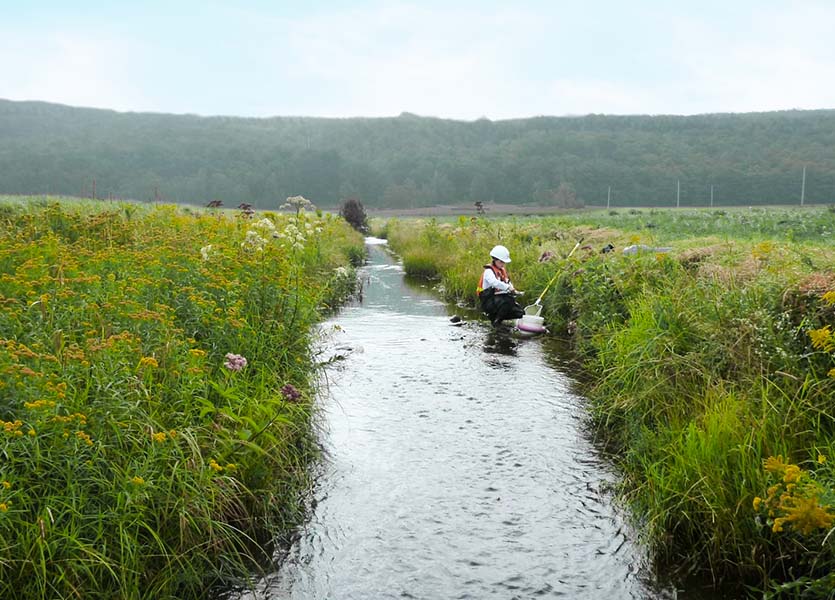compliance with
requirements
Environmental Monitoring
Environmental monitoring is usually carried out in line with a requirement or a condition of the permit or authorization. Environmental monitoring of a worksite over the course of a project includes ensuring the implementation of mitigation measures, requirements, and conditions for permits and authorizations, or for environmental estimate, as well as to ensure compliance with applicable environmental regulations. Environmental monitoring involves verifying and confirming the efficiency of mitigation measures implemented during the construction phase, ensuring the success of the site remediation work, and, if needed, making the required adjustments. In some cases, monitoring activities may be related to the objectives set by a compensation habitat required by permits and authorizations.
Specific areas
of intervention
- Development of monitoring and follow-up programs
- Environmental monitoring during construction
- Soil and water samples
- Fish relocation for work carried out in bodies of water
- Evaluation of underground drainage and recommendations for upgrades
- Crop yield monitoring
- Monitoring regeneration of forest stands and plantations
- Wetland monitoring
- Transplantation of plant species
- Development and monitoring of wildlife compensation habitats
- Shoreline stabilization monitoring
Examples
of past
projects
Contributing to the success of your projects
Assistance – Permits and Authorizations
In order to help you obtain your permits and authorizations in an efficient manner with respect to the natural environments where the project will take place, Groupe Conseil UDA is able to leverage its 40 years of experience and provide you with support, guidance, and a turnkey service.
As an expert in the industry, Groupe Conseil UDA is able to support you in the process of approaching various decision-making bodies. We are also able to provide any on-site services required, all with the goal of minimizing undue delays and maximizing your chances of success.
Find out moreEnvironmental Services
-
Environmental
Characterization -
Environmental
Impact Study -
Mapping
and Geomatics - Forestry
-
Agronomy and
Agricultural Engineering





